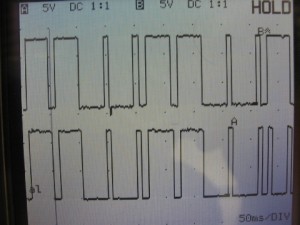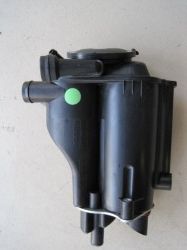Posted on 5/25/2011

Porsche street cars first received computerized engine management for the 1980 model year. By today’s standards, the early version was elementary in comparison. This addition was obvious by the installation of an oxygen sensor to monitor oxygen content in the exhaust stream. This was Porsche’s approach to improve engine performance and tailpipe emissions in most operating conditions. In 1984 Porsche installed a full computerized engine management system named Digital Motor Electronics (DME) in the 911 Carrera. DME controlled not only the fuel injection but also the ignition system making it a complete package with one control unit for the entire engine management system. A basic description of the computerized engine management system is a control unit (computer), also known by some as the brain, which receives data from sensors on the engine that are monitoring its operation. These sensors monitor engine temperature, RPM or speed, throttle position, intake ... read more
Posted on 4/27/2011
The oxygen sensor was developed in the late 1960’s by the Robert Bosch Corporation. Porsche first installed an oxygen sensor, often referred to as an O2 sensor, in all their cars starting from 1980. The O2 sensor plays a critical role in the proper performance of the engine and helps support the effective operation of the emissions system. The O2 sensor is physically located in the engine’s exhaust system and monitors oxygen content in the exhaust gases exiting the engine. The O2 sensor operates by the principle of a chemical reaction that generates a voltage when oxygen in the exhaust gases comes in contact with the precious metals that comprise the O2 sensor. If little or no oxygen is present in the exhaust gases, a rich running condition exists and the voltage will build up higher in the O2 sensor. A lean running condition will have a lot of oxygen in the exhaust stream and this will generate a small amount of voltage. This voltage signal is sent to the Dig ... read more
Posted on 3/21/2011

Buying a used Porsche can be a difficult and even stressful task due to the potential for expensive repairs. Anyone contemplating a used Porsche purchase should consider that at a minimum, a few thousand dollars will be needed to bring things into top condition. Many believe that problems like a worn out clutch, or even engine and suspension issues are the worst and will set you back a lot of money–and they can. However, the worst case scenario is a twisted or diamond shaped chassis (body) caused by an accident. Often you cannot visually tell just by glancing at the exterior of the car. In this situation, the chassis will never be the same no matter how much time or expense is invested. The only way to lessen this risk is to send the prospective purchase for a PPI (Pre-Purchase Inspection) to a highly experienced Porsche repair facility. The chassis inspection should be top on the list, followed by the drive train, engine, gearbox, brake system, and finally ... read more
Posted on 2/20/2011
In this modern day and age of computerized electronics, a software (Firmware) update is a commonly utilized repair, and your automobile is no exception. Porsche, like all automobile manufacturers, periodically reviews and refines the software operating parameters in their cars. This can be to optimize system performance however it is most often utilized to correct an operational anomaly. When an issue is identified that is non hardware related and affects a model line or a specific series of cars, the software is modified and is issued as an update. Whenever a software update is available for your car it is beneficial to get it installed, the car will operate better even if you cannot detect the difference. Updates are available to subscribing Independent Repair Shops either through the Porsche online network or can be installed with a factory genuine Porsche systems tester and software (PIWIS). There are times when the information or data carried by the CA ... read more
Posted on 1/22/2011

The Engine oil air separator directly affects the engine crankcase atmosphere because basically, all Porsche’s from 1980 on, including the current 986, 987, 996, 997, Cayman & Cayenne engines, all are positive crankcase type systems. This means that the engine crankcase has vacuum supplied from the intake manifold to collect and burn the residual combustion by-products or blow-by in the crankcase by running it through the engine again, all in an effort to lower the vehicle emissions. On most occasions when the oil separator fails, the low pressure (vacuum) in the engine crankcase rises to an unusually or abnormally high figure and, more likely than not, it ends up drawing engine oil into the intake system. This usually fouls spark plugs and, in rare cases, causes damage to the oxygen (O2) sensors, catalytic converters and possibly various other sensitive fuel injection components. In extreme cases an oil separator failure with excessively high vacuu ... read more